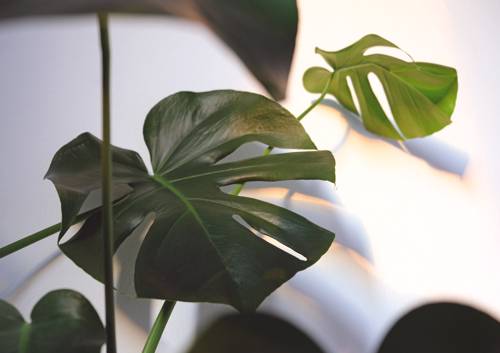
FAQ About Indoor Plant Leaf Shedding Causes and Solutions

Why do indoor plants shed their leaves?
Indoor plants may shed their leaves due to various reasons such as inadequate light, overwatering or underwatering, temperature fluctuations, low humidity, pest infestations, or environmental stress. Identifying the correct cause is essential to address the issue effectively.

How can I tell if overwatering is causing leaf shedding in my plant?
Overwatering is a common cause of leaf shedding. Signs include yellowing leaves, blackened roots, and wet potting soil. If the soil remains soggy and does not dry out between waterings, it may be causing root rot, resulting in leaf loss.

What role does light play in leaf shedding for indoor plants?
Light is crucial for indoor plants as it is necessary for photosynthesis. Insufficient light can cause leaves to turn yellow and drop. Ensuring that your plant receives adequate light by moving it closer to a window or providing artificial lighting can help prevent leaf shedding.

Can temperature changes cause indoor plants to lose leaves?
Yes, sudden temperature changes, especially cold drafts or heat from radiators, can stress plants and lead to leaf drop. Maintaining a stable room temperature suitable for the specific plant species is important to prevent this issue.

Is low humidity a factor in indoor plant leaf shedding?
Low humidity can cause leaf shedding, especially in tropical plants that thrive in humid environments. Increasing humidity levels using a humidifier or placing a tray of water near the plant can help mitigate this problem.

How can pest infestations lead to leaf loss in indoor plants?
Pests such as spider mites, aphids, and mealybugs can damage plant leaves, leading to shedding. Regularly checking plants for signs of pests and using appropriate treatments like insecticidal soap or neem oil can prevent and resolve infestations.

How do I prevent indoor plant leaf shedding due to underwatering?
Underwatering can cause plants to shed leaves as a survival mechanism. Regularly checking the soil moisture and watering when the top inch is dry can help prevent this. Ensuring plants are in the appropriate pot with drainage holes also helps manage watering needs.

Can moving plants cause leaf drop?
Yes, moving plants can result in leaf drop due to stress caused by changes in their environment. It is important to acclimate plants gradually to new conditions to minimize stress-induced leaf shedding.

Are there any pests that specifically cause leaf shedding indoors?
Common indoor pests that contribute to leaf shedding include spider mites, aphids, and mealybugs. These pests feed on the leaves, weakening the plant and resulting in leaf loss.

What can I do if my plant has shed most of its leaves?
If a plant has lost most of its leaves, identify and correct the underlying issue causing the leaf drop. Prune any damaged parts, ensure proper care in terms of light, water, and humidity, and be patient as it may take time for the plant to recover.

How does nutrient deficiency affect leaf shedding in indoor plants?
A lack of essential nutrients can cause leaves to turn yellow and fall off. Regular feeding with a balanced fertilizer during the growing season can help maintain leaf health and avoid deficiencies.

What are some common signs that a plant is stressed and may shed leaves?
Signs of stress in plants include yellowing or browning leaves, wilting, leaf curling, and unexplained leaf drop. Identifying and addressing the source of stress can help prevent leaf loss.

Can improper potting soil lead to leaf shedding?
Yes, improper potting soil that does not drain well or lacks nutrients can lead to root problems and ultimately cause leaf shedding. Using soil specific to your plant’s needs ensures healthy root systems and reduces leaf loss.

What environmental changes should I be aware of that might affect leaf drop?
Changing light conditions with the seasons, indoor heating, air conditioning, or moving plants to different parts of the home can impact leaf shedding. Consistency in care and environment helps minimize leaf drop.

How long does it typically take for a plant to recover from leaf shedding?
Recovery time can vary depending on the severity of the issue and plant species. With proper care, plants may start to show new growth within a few weeks, though complete recovery may take several months.

Is leaf shedding a natural process for indoor plants?
Leaf shedding can be a natural part of a plant’s lifecycle, especially in deciduous species. However, excessive shedding is usually a sign of an underlying problem that should be addressed.

What should I do if my plant is shedding leaves due to low light levels?
To address leaf shedding caused by low light levels, move the plant to a brighter location or use grow lights to supplement natural light. Adjust care routines gradually to prevent further stress.

Does repotting a plant help reduce leaf shedding?
Repotting can help reduce leaf shedding if the plant is root-bound or if the soil is depleted. It allows for fresh soil and more space for the roots, improving overall plant health and reducing stress-related leaf loss.

Why might a plant shed leaves after being brought indoors from outside?
Plants can shed leaves when moved indoors due to stress from changes in light, temperature, and humidity. Gradually acclimating the plant to indoor conditions can minimize leaf drop.

Are there specific indoor plants more prone to leaf shedding?
Certain plants, such as Ficus and Schefflera, are more prone to leaf shedding when stressed. Understanding the specific needs of these plants and providing optimal care can help maintain healthy foliage.
